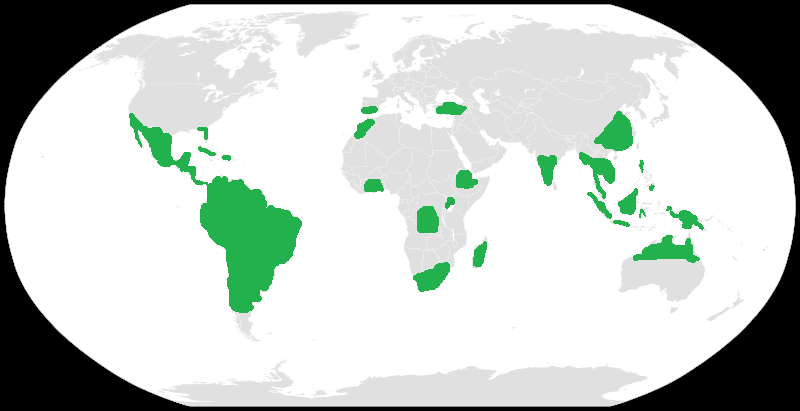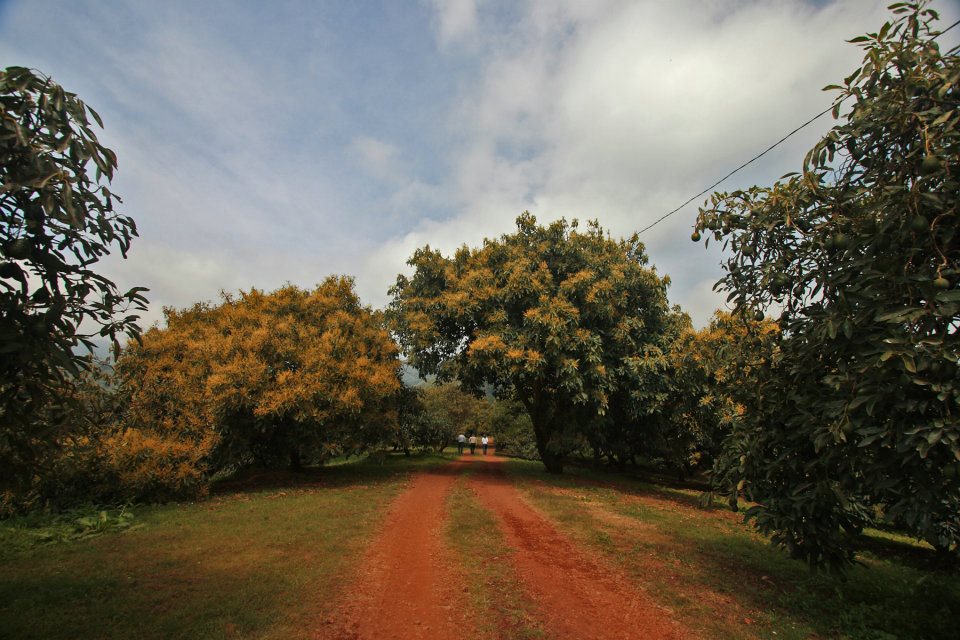
The Humble Home of the Avocado
Most avocados grow in tropical climates, however some are
also capable of growing in temperate climates as well. The trees
are native to Central and South America, but some are also found
in the southernmost points in North America such as California
and Florida, as well as the Caribbean, parts of Africa,
Indonesia, China and parts of Australia. The largest producer
of avocados in the world is Mexico, followed by Indonesia and
the United States. The oldest evidence of avocados in history was
found in a cave in Puebla, Mexico dating all the way back to the
year 10,000 B.C.

The map represents areas of the world capable of facilitating avocado growth in green.
Avocados prefer well-drained soil, but are even capable of growing in volcanic soil. The soils that the avocado trees tolerate include clay, sand, acidic and alkaline soils, with optimum soil pH around 6.3. High amounts of salt in the area can be detrimental to avocado trees. They prefer full exposure to sunlight or a minimal amount of shade. An annual rainfall of around 50 inches is satisfactory for an avocado. The bark of an avocado tree is very brittle and is prone to damage during strong storms, so this must be taken into account when deciding where to plant an avocado tree. The trees like lots of room to grow and prefer to be about 30 feet away from their closest neighbor.

Avocado roots need good drainage to prevent becoming waterlogged. If planted in an area with poor drainage and a low soil pH, root rot can become a big problem.
Other organisms that live in the same habitats as avocados include the pineapple, Ananas comosus; the pomegranate, Punica granatum; and the dragonfruit, Hylocereus undatus.
Next move onto the adaptation page to see how avocados have learned to interact with their environment or head to the home page to start from scratch.